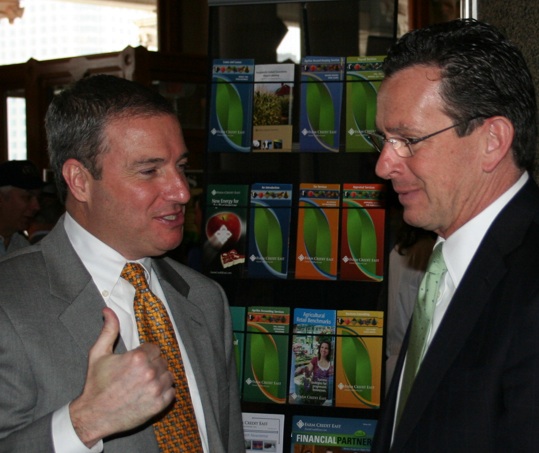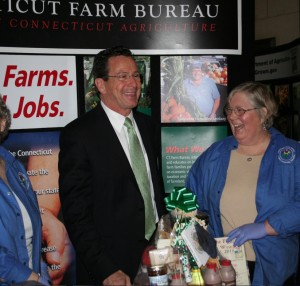 Governor Dannel P. Malloy met with and sampled the range of products produced in Connecticut during Ag Day at the Capitol in Hartford. The annual event takes place during the National Ag Week campaign, March 13 to March 19, 2011, hosted by the Agriculture Council of America.
Governor Dannel P. Malloy met with and sampled the range of products produced in Connecticut during Ag Day at the Capitol in Hartford. The annual event takes place during the National Ag Week campaign, March 13 to March 19, 2011, hosted by the Agriculture Council of America.
Dairy, for example, is a $1 billion industry in Connecticut.
Connecticut Dairy Farmers noted their support of the Working Lands Alliance 2011 legislative priorities which include bonding for farmland protection and a revision to the Community Investment Act 05-228 to restore funding to the farmland protection program and continue support for Connecticut dairy farms.
After a tough New England winter, the economic impact of weather led to significant damage to agricultural buildings across the state. More than 300 agricultural structures on 99 farms have either totally or partially collapsed, according to reports to the Connecticut Department of Agriculture.
Agricultural losses are being tallyed to the FSA and as part of the state’s overall effort to account for damages associated with the winter’s storms. All information is being provided to Governor Malloy and for federal assistance. Call the Connecticut Department of Agriculture commissioner’s office at (860) 713-2500 for details; Connecticut State FSA Office, (860) 871-4090.
In related news, a conference on Thursday, March 31, organized by the Connecticut Farm Bureau Association (CFBA), will bring people together to discuss the fundamentals of municipal planning and zoning and help educate attendees on how they can work to support local agriculture.
“This is our second annual conference and those who attend will receive an overview of the fundamentals of planning and zoning and discuss effective strategies to encourage agricultural growth in municipalities,†says Joan Nichols, CFBA government relations specialist. “So much of Connecticut agriculture is impacted by local zoning regulations and decisions that it is critical producers understand how municipal zoning impacts their agricultural operation, and more importantly, what they can do to improve the local regulatory climate for agriculture in their communities.â€
